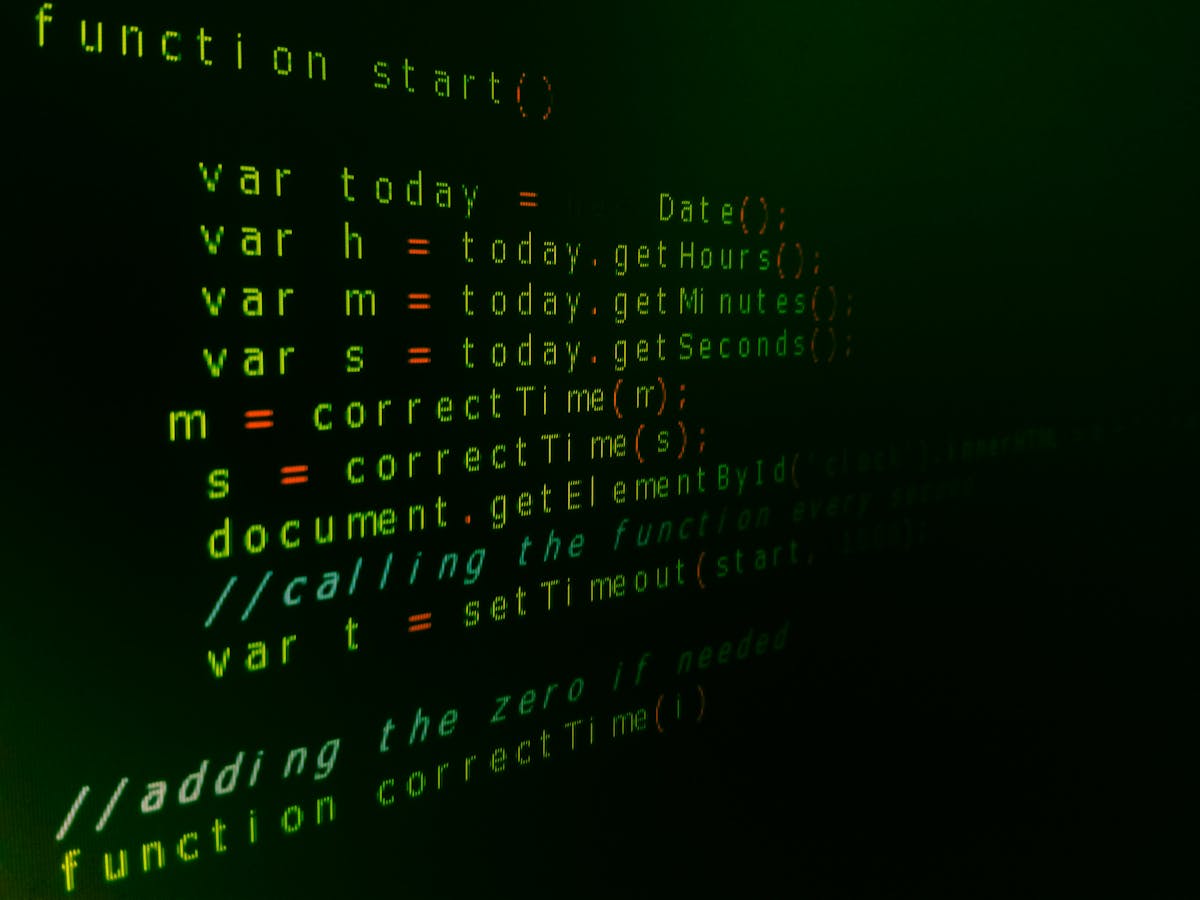All Concerning Full-Stack Development: Discovering Its Role in Efficient Software Program Design
Full-stack development has actually arised as a keystone of contemporary software program design. By integrating front-end and back-end innovations, it creates natural internet applications. This strategy not just boosts individual interfaces yet also reinforces server-side functionality. As the need for adaptable designers increases, comprehending the subtleties of full-stack growth ends up being vital. Exactly what does this include, and what effects does it hold for the future of software application design?
Understanding Full-Stack Advancement
Full-stack development incorporates the total range of internet development, integrating both front-end and back-end modern technologies. This multidisciplinary approach allows programmers to develop completely practical internet applications, taking care of whatever from individual interface layout to server administration. Full-stack developers have a considerable ability, allowing them to browse various layers of an application, including data sources, server-side logic, and client-side interactions.Understanding the full-stack development procedure entails recognizing the significance of individual experience and application performance. Programmers must think about how these components communicate, making certain a seamless experience for customers. In addition, full-stack growth cultivates cooperation amongst groups, as developers can interact successfully throughout self-controls. niels denekamp dubai. This flexibility not just improves operations however also improves analytical abilities. In a progressively digital world, the need for full-stack programmers continues to grow, highlighting their pivotal role in the software design landscape
Secret Technologies in Full-Stack Advancement
The landscape of full-stack advancement is specified by a variety of essential innovations that empower developers to construct robust internet applications. On the front end, prominent structures like React, Angular, and Vue.js facilitate the production of vibrant interface. These tools permit designers to produce responsive styles and boost user experiences.On the back end, Node.js, Django, and Ruby on Bed rails are commonly used for server-side growth, enabling efficient handling of data source interactions and server logic. Data sources such as MongoDB and PostgreSQL are important for data storage space and retrieval.APIs are vital in linking the front end and back end, enabling seamless information exchange. Additionally, version control systems like Git are crucial for taking care of code changes and collaboration among development groups. Jointly, these innovations form a substantial toolkit that makes it possible for full-stack designers to deliver high-grade applications effectively.
Benefits of Being a Full-Stack Developer
An occupation as a full-stack developer provides numerous advantages that interest both newbies and seasoned professionals. One significant advantage is the flexibility to service both front-end and back-end modern technologies, allowing programmers to develop comprehensive solutions. This twin capability improves analytical abilities, enabling them to address problems across the whole pile efficiently.Additionally, full-stack designers commonly enjoy higher work opportunities, as their diverse skills make them beneficial properties to business seeking to enhance development procedures. The capacity to recognize and take care of whole tasks fosters boosted cooperation within teams, resulting in an extra natural workflow.Moreover, full-stack designers tend to regulate greater salaries because of their extensive expertise. Continuous learning is another perk, as they often involve with numerous modern technologies and frameworks, maintaining their abilities relevant. Ultimately, the duty of a full-stack designer is rewarding and dynamic, using a meeting occupation path for those that accept it.
The Full-Stack Development Refine
While maneuvering with the full-stack growth process, developers participate in a series of organized stages that assure the creation of robust applications. Requirements event is crucial, as it lays the foundation for understanding individual needs and job objectives. This is complied with by designing the application architecture, where the total framework, innovations, and structures are selected to satisfy the requirements.Next, developers shift to the front-end and back-end advancement stages, where they create interface and server-side reasoning, respectively. Examining is an essential stage that validates capability, safety and security, and efficiency, attending to prospective pests and problems prior to deployment.Finally, the deployment stage involves releasing the application and monitoring its performance in an online setting. Throughout this feedback, iteration and procedure loops are important, allowing for constant renovation and adaptation to changing requirements. This organized technique helps with the development of effective, scalable, and maintainable applications.

Cooperation Between Front-End and Back-End Teams
Reliable partnership between front-end and back-end teams is crucial for successful full-stack advancement. Solid interaction, using shared tools and modern technologies, and agile collaboration techniques can greatly boost operations and job results - niels denekamp dubai. By fostering a natural working connection, groups can much better align their efforts and supply a seamless customer experience
Value of Interaction
Successful cooperation in between front-end and back-end teams pivots on consistent and clear interaction. This communication is important for lining up project timelines, goals, and assumptions. When front-end designers comprehend the back-end architecture and vice versa, they can produce extra practical and natural applications. Routine conferences and updates help with the exchange of ideas, permitting teams to address possible concerns early in the development procedure. In addition, reliable interaction cultivates a collaborative atmosphere, encouraging employee to share insights and feedback, eventually leading to ingenious remedies. By prioritizing interaction, teams can decrease misconceptions, streamline operations, and boost total performance. Consequently, the role of Go Here interaction in full-stack development can not be overemphasized; it functions as the foundation of successful software application engineering jobs.
Shared Devices and Technologies
Clear communication sets the phase for utilizing shared tools and technologies successfully in full-stack development. This collaboration in between front-end and back-end teams depends upon the adoption of incorporated devices that streamline operations and boost performance. Version control systems, such as Git, help with seamless collaboration by allowing designers to track changes and combine code effectively. Moreover, APIs work as a crucial bridge, enabling front-end and back-end elements to communicate properly. Additionally, common advancement environments, like Docker, foster consistency, enabling groups to work in an uniform configuration. By leveraging these shared devices, teams can lessen misunderstandings and quicken the growth procedure, ultimately causing even more natural software application solutions that satisfy job needs and user expectations.
Agile Cooperation Practices

Usual Challenges in Full-Stack Advancement
What challenges do full-stack programmers run into as they navigate the complexities of both front-end and back-end innovations? One prominent obstacle is the fast evolution of structures and devices, which needs constant discovering and adaptation. Programmers have to remain upgraded with both front-end collections, such as React or Angular, and back-end innovations like Node.js or Django, which can bring about skill spaces or expertise overload.Additionally, full-stack designers typically struggle with workload management because of the considerable series of duties. Balancing jobs between interface design, server-side logic, and data source management can cause time constraints and job delays.Collaboration and communication within teams likewise existing obstacles, as full-stack programmers must connect the space in between front-end and back-end groups, making certain placement on job objectives. Debugging across multiple layers of the pile can complicate problem resolution, eating important time and resources.
The Future of Full-Stack Development
Development in technology promises to shape the future of full-stack advancement substantially. As companies progressively take on cloud computer and microservices designs, the demand for full-stack developers who can effortlessly incorporate front-end and back-end innovations is expected to expand. The increase of expert system and equipment discovering will likely affect development methods, making it possible for extra effective coding and automated testing processes.Moreover, the development of low-code and no-code systems may redefine the function of full-stack developers, enabling them to concentrate on higher-level style and style while simplifying regular tasks (niels denekamp). This change might foster partnership in between non-technical and technical group members, broadening the range of full-stack development.Additionally, the emphasis on cybersecurity will certainly bring about the combination of safety practices within the full-stack growth lifecycle. Overall, the future of full-stack advancement shows up bright, defined by continual learning and adjustment to an ever-changing technological landscape
Often Asked Concerns
What Educational History Is Preferred for Full-Stack Developers?
The preferred educational history for full-stack developers commonly includes degrees in computer science or software engineering. Many effective developers additionally emerge from coding bootcamps or self-taught experiences, highlighting useful abilities over official education and learning.
How Do Full-Stack Designers Stay Upgraded With New Technologies?
Full-stack developers remain upgraded with brand-new look at these guys innovations via continual understanding using online training courses, attending seminars and workshops, participating in area online forums, following sector blogs, and exploring with brand-new tools and frameworks in individual tasks.
Is Full-Stack Development Suitable for Beginners?
Full-stack advancement can be ideal for beginners, as it provides a comprehensive understanding of both front-end and back-end technologies. The discovering contour may be steep, needing devotion and consistent technique to grasp different abilities.
What Prevail Occupation Paths for Full-Stack Developers?
Common job courses for full-stack designers include duties such as software designer, web programmer, technological lead, and job manager. Several likewise specialize in details innovations or move right into relevant areas like product management or individual experience design.
Just How Does Full-Stack Advancement Differ From Typical Software Application Growth?
Full-stack development encompasses both front-end and back-end tasks, allowing designers to take care of whole projects. In comparison, traditional software application advancement often entails customized duties, focusing separately on either server-side or client-side facets of applications. Full-stack growth incorporates the complete spectrum of internet advancement, incorporating both front-end and back-end modern technologies. Full-stack designers possess a comprehensive skill collection, allowing them to browse various layers of an application, consisting of data sources, server-side logic, and client-side interactions.Understanding the full-stack development process includes recognizing the importance of individual experience and application performance. In addition, full-stack advancement promotes partnership among groups, as programmers can communicate efficiently throughout techniques. The landscape of full-stack advancement is specified by a selection of crucial technologies that encourage programmers to construct robust web applications. While maneuvering with the full-stack advancement procedure, programmers engage in a collection of organized phases that assure the creation of durable applications.